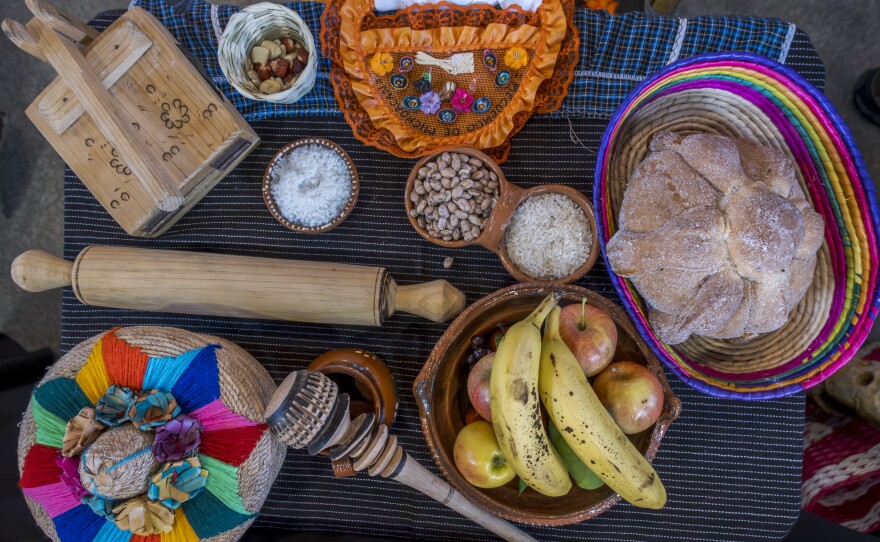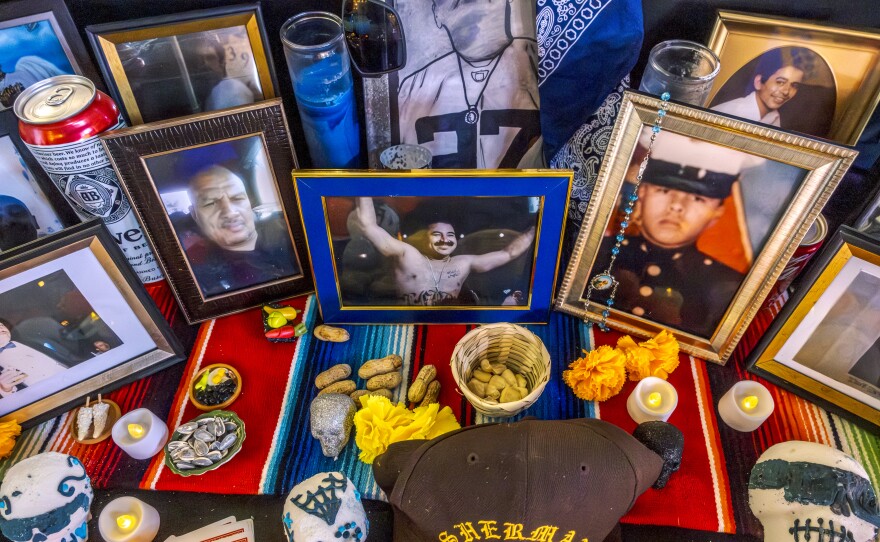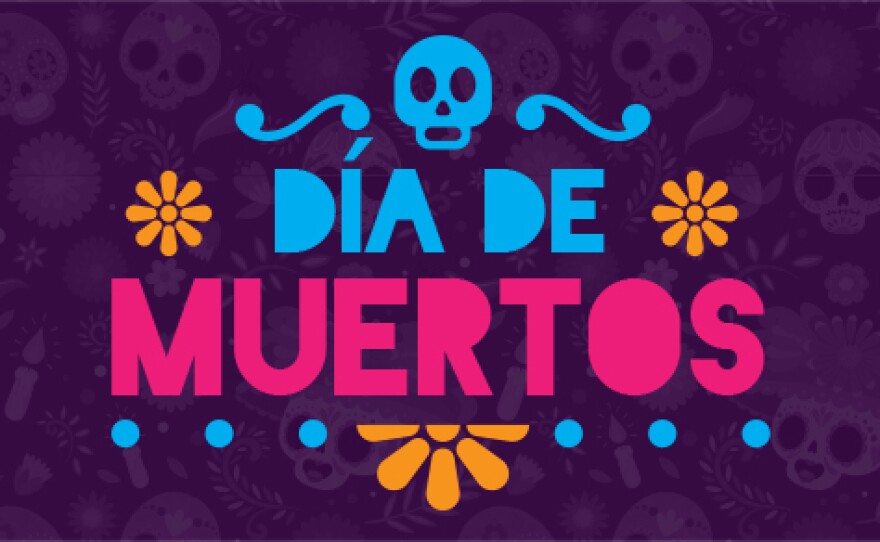Francisco Soto first started making altars or "ofrendas" when he was a child with his mother.
“We used to set up an altar for my siblings that passed away — a pair of twins,” Soto said. His mother explained the meaning of what they placed on the altar.
Today, Soto is part of a team that creates ofrendas or offerings in English for Día de Muertos celebrations at the Sherman Heights Community Center.
“An ofrenda is a gift, a gift that we give to all the people that have died. That's what an ofrenda means. It's giving something,” Soto explained.
While the traditional roots dates back to the indigenous people of Mexico, Soto pointed out that anyone can make an altar.
“Anyone who feels that they want to honor their deceased, they're more than welcome to set up an altar,” Soto said.
As the tradition began with Indigenous rites, and was later influenced by Catholic rituals, the ofrenda has a mix of these different traditions. In Mexico, throughout the different states, there are variations of how, why and what goes into an altar.
Making an ofrenda
Soto said there are no exact rules for creating an ofrenda. Below are some recommendations from Soto and Mexico’s Ministry of Agriculture and Rural Development for creating an ofrenda.
When should I put up/down my ofrenda?
Keep in mind the celebrations are not limited to widely known Día de Muertos celebratory dates of Nov. 1 and Nov 2. Celebrations start on Oct. 28 for souls who suffered an accident, a tragedy or a violent death; Oct. 30 and 31 are dedicated to children who died and were not baptized; Nov. 1 is for the deaths of young children, and also known as All Saints’ Day; and Nov. 2 is All Souls’ Day for all adults.
You can start setting up your ofrenda as soon as October starts. Soto said it doesn't matter when you take down your altar. He added his family takes theirs down after Nov. 3.
What size should it be?
An altar doesn't have to be elaborate or large. If you have a lot of space, you can set up a larger altar.
What elements go on an ofrenda?
Many ofrendas include traditional elements and there are different beliefs about what they represent. Some altars include items to represent the four elements of life: earth, wind, water and fire. Altars also include elements that reflect a family’s love for departed loved ones. You can add items the deceased person enjoyed. For example, food they liked to eat or if they were a fan of a sports team you can add items related to the team. As Soto said, the ofrenda is a gift, whatever you want to give to your departed loved one.

- Photos — They are placed on an altar as a way to honor the dead.
- Candles — Their light is considered a guide to the departed as they return. They can be formed in the shape of a cross as a representation of the different cardinal directions.
- Water — It’s believed to calm the thirst of the deceased. It can also symbolize purity of the soul.
- Salt — In some parts of Mexico, salt is believed to help keep the spirit from getting lost or corrupted while it temporarily returns to the world of the living.
- Cempasúchil or marigold flowers — Their scent is believed to help souls arrive to their ofrenda.
- Pan de muerto or bread of the dead — Baked in the shape of bones, in some places, it's believed to represent the cycle of life and death.
- Skulls — In ancient times, real skulls were reportedly used in altars. They were later replaced with skulls made from sugar, amaranth and chocolate.
- Papel picado or decorated tissue paper — Brings color to the ofrenda and is also said to represent wind, air and the fragility of life.
- Alcohol — It offers an opportunity to toast the arrival of the departed.
- Monarch butterfly — Some believed them to be the spirits of the dead coming to visit.
How do I make the sugar skulls and other elements?
The Sherman Heights Community Center has additional resources on its website for those looking to create their own ofrenda. Checkout their Calaveritas y Diablitos resource guide which includes several how-to guides on making sugar skulls, sugar skull mini piñata, papel picado, pan de muerto, miniature food sculptures, and even a Disney’s Coco movie inspired dinner.
Their Día de Muertos celebrations started last week and are free, open to the public and offer lots of ofrendas that can serve as inspiration. They are one of many community organizations hosting community ofrendas and Día de Muertos celebrations throughout the county.
The Día de Muertos celebrations and ofrendas are the “heart of the (Sherman Heights Community) Center,” Soto added. “When people come here and don't have an idea how to make an altar, I'm glad to help.”
He also highlighted how an ofrenda offers the opportunity to remember a loved one who passed away and welcome them back.
“It's a spiritual thing. It's something that we feel that they're here with us,” Soto said.







